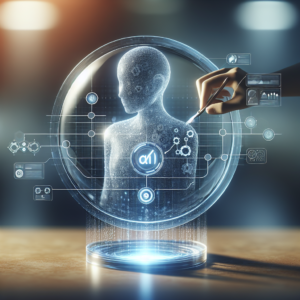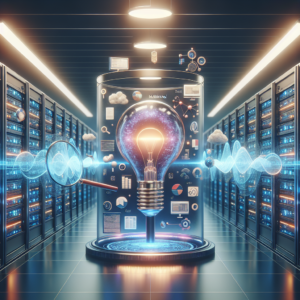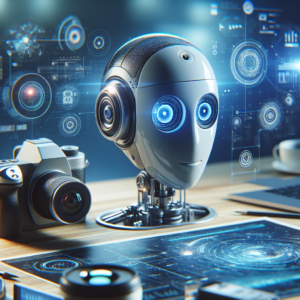What if I told you that the computer you’re using right now could understand and process human language just as well as you do?
Natural Language Processing: A Brief Overview
Natural Language Processing, or NLP for short, is a fascinating field that sits at the intersection of linguistics, computer science, and artificial intelligence. It involves the development of algorithms that allow computers to understand, interpret, and generate human language in a way that is both meaningful and useful. With the proliferation of data and the growing need for machines to communicate with humans, NLP has become increasingly relevant in recent years.
When I think about NLP, I’m amazed at how it impacts our everyday lives, often in ways we don’t even realize. From chatbots providing customer service to voice assistants like Siri and Alexa responding to our queries, NLP makes all of this possible. The real magic happens behind the scenes, where complex algorithms work tirelessly to turn our spoken and written words into something that machines can comprehend.
The Evolution of Natural Language Processing
Early Days of NLP
The history of NLP can be traced back to the mid-20th century, where the groundwork was laid for machines to understand human language. Early efforts were primarily focused on machine translation, with projects like the Georgetown-IBM experiment in 1954, which showcased the first computers’ ability to translate Russian into English—albeit poorly.
The Birth of AI
As artificial intelligence emerged as a field of study in the 1950s and 1960s, researchers began to explore how to teach computers to process natural language. The development of formal grammars and language rules provided a foundation for programming language understanding. However, these early models were quite limited and often struggled with the nuances of language, such as context and tone.
Machine Learning Transforms NLP
The real revolution in NLP began with the advent of machine learning in the 2010s. Unlike traditional rule-based systems, machine learning algorithms can learn patterns from vast amounts of data. By training on large datasets, NLP models can improve their understanding and accuracy over time. This shift has opened the doors for applications that were once considered impossible.
Innovations in NLP
Deep Learning and Neural Networks
One of the most significant advancements in NLP has been the rise of deep learning, particularly through neural networks. These models are inspired by the human brain and can automatically learn representations from data. For instance, neural networks have enabled breakthroughs in tasks such as translation, text generation, and sentiment analysis.
Table: Key Innovations in NLP
| Innovation | Description |
|---|---|
| Deep Learning | Algorithms that use neural networks to learn from data |
| Transformers | A model architecture that processes sequential data |
| Pre-trained Models | Models trained on large datasets that can be fine-tuned |
| Attention Mechanism | A technique that focuses on specific parts of input data |
Transformers and BERT
Transformers, introduced in the paper “Attention is All You Need” by Vaswani et al. in 2017, represent another landmark advancement. This architecture uses attention mechanisms, enabling models to weigh the importance of different words in a sentence. Bert (Bidirectional Encoder Representations from Transformers), which was released by Google, propelled NLP into a new era, allowing for improved understanding of context in language.
GPT Models
Another major breakthrough I find fascinating is the Generative Pre-trained Transformer (GPT) models developed by OpenAI. These are designed to generate coherent text based on the input they receive. What astonishes me is how these models, such as GPT-3, have demonstrated the ability to create human-like text, answer questions, and even write stories, showcasing the potential of NLP to enhance creativity.
Applications of NLP
Conversational Agents and Chatbots
Conversational agents, commonly known as chatbots, are among the most visible applications of NLP today. In my interactions with customer service, I frequently find chatbots assisting me with inquiries. They can schedule appointments, provide product recommendations, and resolve issues—all thanks to NLP’s ability to understand intent and facilitate natural conversations.
Sentiment Analysis
Another intriguing application is sentiment analysis. Companies like mine may use NLP algorithms to analyze social media posts, product reviews, and customer feedback to gauge public sentiment toward their brand. Understanding whether feedback is positive, negative, or neutral helps businesses make informed decisions.
Machine Translation
The power of NLP in translation tools is something I’m impressed by as well. Services like Google Translate use NLP to convert text from one language to another. While it’s not always perfect, the technology has advanced significantly, allowing me to communicate with people across the globe more efficiently than ever before.
Table: Popular NLP Applications
| Application | Description |
|---|---|
| Conversational Agents | Bots that conduct conversations with users |
| Sentiment Analysis | Understanding emotions in text through data evaluation |
| Machine Translation | Converting text between languages using algorithms |
| Text Summarization | Condensing large documents into shorter summaries |
Information Retrieval
When I search online, often I’m bombarded with a wealth of information. NLP plays a crucial role in information retrieval by making it possible for search engines to better understand and rank content based on relevance to user queries. Search algorithms leverage NLP to make results more accurate and helpful.
Text Summarization
In today’s fast-paced world, I often find myself overwhelmed with information. Text summarization tools use NLP to condense lengthy articles or documents into bite-sized summaries, making it easier for me to grasp the essential points without wading through all the details.
Challenges in Natural Language Processing
Ambiguity and Context
Despite its advancements, NLP still faces challenges. Language is inherently ambiguous, and context plays a vital role in understanding meaning. For example, the word “bank” can refer to a financial institution or the side of a river. Machines often struggle to discern the correct interpretation without clear context.
Sarcasm and Humor
One of the more complex aspects of language is humor and sarcasm. I often find that even humans can struggle with these nuances in conversation, making it even more difficult for NLP models to identify them. Teaching machines to understand humor poses a significant challenge but is vital for enhancing human-computer interactions.
Data Privacy and Bias
The data used to train NLP models can introduce biases that reflect societal prejudices. This concern highlights the importance of ensuring that AI systems are fair and equitable. Additionally, data privacy is an ongoing issue, especially when handling personal information, and developers must prioritize creating secure systems.
The Future of NLP
Growing Integration in Daily Life
As I look ahead, I can only imagine how integrated NLP will become in our lives. From more advanced personal assistants that can handle complex tasks to improved mental health chatbots, opportunities for applications seem limitless. I see a future where NLP technology assists in education, helping students learn languages or subjects more effectively.
Ethical Considerations
With the advancements come ethical considerations. What responsibilities do developers have to ensure fairness and transparency in NLP systems? I believe it’s crucial for stakeholders to work together to address these issues and create a future where NLP technology is used responsibly.
Multimodal Understanding
In the coming years, I envision a shift toward multimodal NLP, where systems can process and understand text, images, and sounds together. For instance, an NLP system could analyze a video and provide a summary or recommendations based on both visual and auditory content. This could revolutionize the way I learn from and interact with media.
Conclusion
Natural Language Processing is a compelling field that is revolutionizing how we interact with technology. From simple chatbots to complex machine translations, every innovation brings us closer to a future where machines can understand and communicate with us as fellow humans. I’m incredibly excited to see how this technology evolves, as it holds the potential to transform industries, improve accessibility, and enrich our daily lives.
As I reflect on the journey of NLP, I appreciate the combination of linguistics and technology that makes it all possible. The developments we have witnessed thus far are just the tip of the iceberg, and I genuinely believe that with continued exploration and innovation, we can create a world where language barriers are diminished, and communication flows freely, fostering greater understanding and connection among people.






